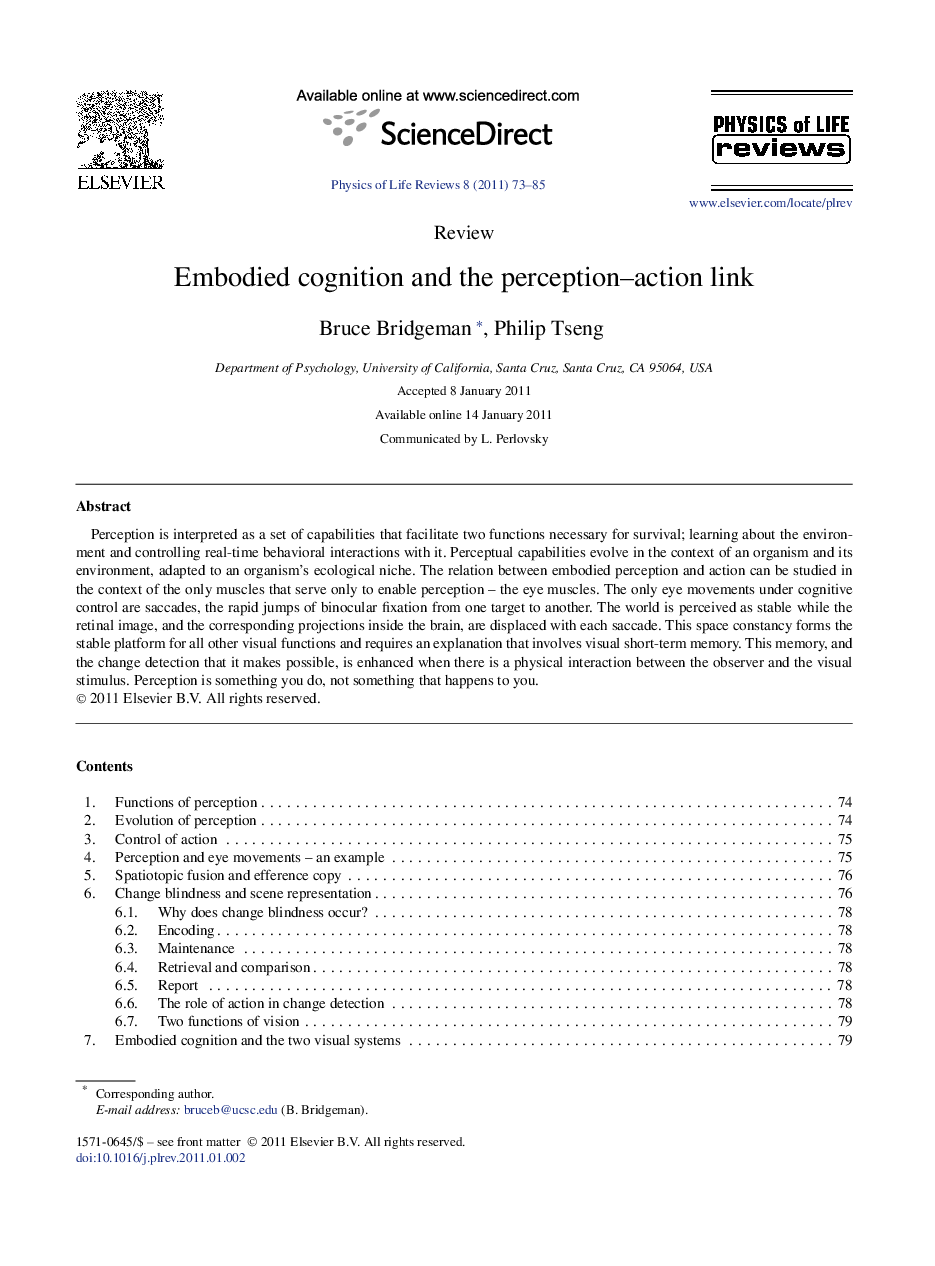| Article ID | Journal | Published Year | Pages | File Type |
|---|---|---|---|---|
| 1871044 | Physics of Life Reviews | 2011 | 13 Pages |
Perception is interpreted as a set of capabilities that facilitate two functions necessary for survival; learning about the environment and controlling real-time behavioral interactions with it. Perceptual capabilities evolve in the context of an organism and its environment, adapted to an organismʼs ecological niche. The relation between embodied perception and action can be studied in the context of the only muscles that serve only to enable perception – the eye muscles. The only eye movements under cognitive control are saccades, the rapid jumps of binocular fixation from one target to another. The world is perceived as stable while the retinal image, and the corresponding projections inside the brain, are displaced with each saccade. This space constancy forms the stable platform for all other visual functions and requires an explanation that involves visual short-term memory. This memory, and the change detection that it makes possible, is enhanced when there is a physical interaction between the observer and the visual stimulus. Perception is something you do, not something that happens to you.
Research highlights► Perception enables learning about environments and controlling real-time behavior. ► Perceptual capabilities are adapted to an organismʼs ecological niche. ► We investigate relation between embodied perception and action. ► To do this, we study the only muscles that serve only perception: the eye muscles. ► Change detection improves during physical bodily interaction with a visual scene.
